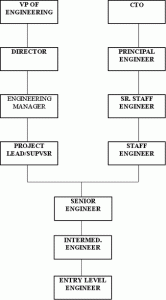|
|
|
Archive for the 'Entrepreneurship' Category
Tuesday, March 3rd, 2009
 It seems that more and more people these days confuse accountability and consequences with ultimatums and punishment. It seems that more and more people these days confuse accountability and consequences with ultimatums and punishment.
I thought it would be a good idea to sort this out, since the former is a part of a strong, healthy culture, while the latter is a major factor in an abusive one.
Accountability stems from the public nature of an action, whether planned or unplanned, and usually includes an unstated request for support and a greater incentive to follow through because others know (the reason for making it public).
Weight Watchers offers accountability and support through its public nature.
Consequences are the result of an action; they may be good, bad or depend on your view of the situation.
In other words, cause and effect—doing A results in B.
- The consequence of studying hard is a good grade on the test.
- The consequence of writing a check with insufficient funds in your account is having it bounce.
- The consequence of not immediately responding to an email may be neutral for you and frustrating for the sender.
Even if you don’t like the idea of consequences there’s no way to stop them. Everything you do, say, even thing has at least one effect if not more.
Business, obviously, is a hot bed of cause and effect—both little and large and often a domino effect.
The vp of engineering announces that the new product will be ready for the big trade show.
Accountability!
But…
The developer out for a week of jury duty is late finishing her part of the project, which slows the team and the project itself is late. Just-in-time purchasing finds a crucial part that was available at the original deadline is now on back order slowing the project still more; by the time the parts arrive manufacturing is in the middle of a scheduled software upgrade that can’t be interrupted, which forces marketing to use a prototype instead of a production version for a crucial trade show making it more difficult for the sales team to convince customers that the product will ship when they need it.
Consequences!
Everybody knows that actions have consequences and you lose credibility if you claim there are none, but consequences have nothing to do with punishment.
Your comments—priceless
Don’t miss a post, subscribe via RSS or EMAIL
Image credit: flickr
Posted in About Leadership, Communication, Culture, Ducks In A Row, Entrepreneurship, Leadership Skills, management, What Leaders DO | 9 Comments »
Saturday, February 21st, 2009
 One of the most popular series of articles at Leadership Turn was written shortly before I came. It’s about styles of learning and how they apply to you, your colleagues, your team and your kids. Written by my editor, Mary Jo Manzanares, they are well worth your time. In fact, you’ll find it useful to review them from time to time, it’s the kind of information that gets pushed to the side, but pays large dividends when kept in the active file. One of the most popular series of articles at Leadership Turn was written shortly before I came. It’s about styles of learning and how they apply to you, your colleagues, your team and your kids. Written by my editor, Mary Jo Manzanares, they are well worth your time. In fact, you’ll find it useful to review them from time to time, it’s the kind of information that gets pushed to the side, but pays large dividends when kept in the active file.
For those of you who deal with products in one way or another, here’s an interesting interview with Alberto Alessi on how to sustain innovation over time. You may have to register (free) to read it, but you’ll find it a source of great information.
There are lots of articles out there about large corporations who spend millions to create environments that spark creativity, encourage teamwork and facilitate a generally happier, i.e., more productive, workforce.
Startups are known for their cool and or funky offices often done on a shoestring. But they aren’t the only ones. It’s not just the big guys or the upstarts that are jumping on the trend. Lots of small businesses create innovative environments. Take a look at Madden Corporate Services, a 15 year old branding biz that’s grown to 39 people and learn how their modest investment pays off.
Your comments—priceless
Don’t miss a post, subscribe via RSS or EMAIL
Image credit: flickr
Posted in About Leadership, Communication, Culture, Entrepreneurship, Innovation, Leaders Who DO, management, Personal Development, Seize Your Leadership Day | No Comments »
Friday, February 20th, 2009
If you read any of the hundreds of how-to books written about good people management and leadership, you’ll find great similarities among them. So, what happens during implementation? Why can the de facto difference between managers be so enormous?
The answer goes back to one of two basic beliefs that are formed and held long before a person becomes a manager.
- People are intelligent, motivated, and really care about helping their company achieve its objectives.
- People are stupid, don’t care, and will screw up if you don’t watch them every minute. Variations of A are discussed, lauded, and underlay most “good” management practices. Variations of B are rarely admitted, infrequently discussed, and can be largely unconscious.
| Think of it as a scale |
A |
B |
| 10_____________________0_____________________ 10 |
Do managers on the B side of the scale always fail while those on the A side are guaranteed success? Unfortunately no.
What does this mean to you? If you’re a current or future manager, you need to be aware of where you are on the scale and then decide if that’s where you want to be—information that is nobody elses business.
If you like where you are, do nothing, you’re all set.
But if you decide to alter your location on the scale, remember that change rarely happens when undertaken as a result of what “they” say, so be sure that it’s you who wants to change.
Your comments—priceless
Don’t miss a post, subscribe via RSS or EMAIL
Image credit: sxc.hu
Posted in About Leadership, Communication, Conflict, Culture, Entrepreneurship, Ethics, Group Dynamics, management, Personal Development, What Leaders DO | No Comments »
Monday, February 9th, 2009
Last week I wrote about both the need and approaches for management to communicate bad news openly and honestly. Wes Ball commented on the need to keep employees involved, which is what I was planning to talk about today.
The language of employee involvement keeps changing, so if you want to do more research, “engage,” in its many forms, seems to be the term of choice for now.
There are five basic rules that must be followed when your focus is to create, enhance or increase engagement.
 Rule One: Engagement is based on trust. If employees don’t trust their management then management can forget about engaging its employees. Rule One: Engagement is based on trust. If employees don’t trust their management then management can forget about engaging its employees.
Rule Two: Engagement requires involvement. Asking for employee input after the decision(s) are already made is a con and breaks trust.
Rule Three: Engagement is based on fairness. Treating a select minority as royalty and the rest like replaceable dirt disengages everyone (including the royalty) and breaks trust.
Rule Four: Engagement requires management to make its decisions first for the sake of the company, second for the sake of the group and third for the sake of themselves. Done in any other order break trust.
Rule Five: Engagement requires courage, authenticity and genuineness (see Notes). Any form of lie/cheat/steal/trash breaks trust.
And while Rule One is the primary rule it is also the corollary of the other four.
Engaging your people, whatever your level of management, starts in your MAP (mindset, attitude, philosophy™).
No matter how well taught, implementing the mechanics of engagement can proceed no further than your belief in, and adherence to, the five rules.
If your MAP acknowledges a need to break the rules don’t waste your time on engagement efforts, because they are doomed to fail. That energy would be better used on recruitment, since your attrition rate will be far higher than any layoff could account for.
NOTE: Two of the best sources on engagement mechanics are Steve Roseler and David Zinger.
Your comments—priceless
Don’t miss a post, subscribe via RSS or EMAIL
Image credit: flickr
Posted in About Leadership, Communication, Culture, Entrepreneurship, Leadership Resources, management, Personal Development, What Leaders DO | 10 Comments »
Friday, February 6th, 2009
 How much longer do you think it will take corporate Earth to get off their terrified, or comfortable, collective asses and embrace a real, live, authentic, proven solution to most of their problems? How much longer do you think it will take corporate Earth to get off their terrified, or comfortable, collective asses and embrace a real, live, authentic, proven solution to most of their problems?
Jaideep C Prabhu, Jawaharlal Nehru Professor of Indian Business and Enterprise at Judge Business School, Cambridge University, and innovation fellow at the Advanced Institute of Management (AIM) Research, is the latest to write passionately about the need for a culture of innovation.
“But businesses bold enough to develop a forward-looking, risk-taking corporate culture and brave enough to cannibalise existing successful products, in order to commercialise radically new ones, are more likely to dominate world markets and increase the competitiveness of their national economies.”
Bold and forward-looking, aren’t those the traits that every over-paid CEO on the planet claims to be their expertise along with how they will ‘lead’ their company into a bright new world…blah, blah, blah.
Are you as tired of hearing them as I am? They talk and talk…and talk.
Or they’re replaced by an impatient Board running from Wall Street’s demand for short-term profits.
Prabhu, along with a host of other experts, says his research shows that “Innovative companies appear to have a similar corporate culture, wherever they may be located in the world.”
“We have identified three specific attitudes and three practices within innovative firms that make them special and drive radical innovation. These are
- risk tolerance,
- a willingness to cannibalise existing products,
- future market orientation,
- empowering product champions,
- fostering internal competition and
- providing incentives for enterprise.”
Attention Wall Street, this stuff is not implemented overnight—or in a quarter.
Whoa. Do you think it’s possible that the silver lining in the current mess that was started and facilitated by Wall Street denizens might be a return to long(er) term thinking?
That CEOs will get canned for embracing quarterly numbers a la Jack Welch in place of radical innovation.
That investors will actually take Warren Buffet’s philosophy to heart and quit putting their faith in hedge funds, day trading and fast profits?
Whee, wanna share the stuff I found?
Your comments—priceless
Don’t miss a post, subscribe via RSS or EMAIL
Image credit: flickr
Posted in About Leadership, Change, Culture, Entrepreneurship, Innovation, Leadership Choice, management, Personal Development, What Leaders DO, What Leaders DON'T | 2 Comments »
Tuesday, February 3rd, 2009
 The list of basic cultural IBBs prompted a phone call from a reader asking for more information on the dual career ladder. When we were done, he suggested that I put that information on the blog this week. Who am I to argue with a reader? The list of basic cultural IBBs prompted a phone call from a reader asking for more information on the dual career ladder. When we were done, he suggested that I put that information on the blog this week. Who am I to argue with a reader?
I’m not an historian, but I think that the need for the ladder was seen first in the technical world at least 40 years ago and although they may not have been the first, IBM and the original Bell Labs were two of the highest profile early adopters.
People work to improve their situation, but companies need only so many managers and only so many people want to manage. This is especially true in tech companies where many people are ill-suited to management roles, yet that was the only road to a raise.
So the two driving facts behind the dual ladder were
- a limited number of management positions—the number is still shrinking as corporate structures keep flattening; and
- recognition that not everyone is suited to management.
Enter the Dual Career Ladder; it’s simple, logical and most easily explained with this graphic

IBM Called their highest level Sr. Fellow, Bell Labs used Principal Engineer. Both positions were more than just an honor for which people strove, since they carried with them the same compensation and status as a director or vice president.
My caller asked why the model wasn’t in wider use if it was so effective.
That’s easy, ego and culture.
Accepting, for example, that a software architect is of equal value to the company as a vice president and should be compensated accordingly is hard to swallow. Few executives are comfortable with the idea that people who do hands-on work are as valuable to the organization as they are. This plays out at every level of management from team leader up.
And it’s not just in tech that this happens. I still remember when the top salesman in a certain industry had his commissioned cut because he had sold so much product that his earnings were more than the company president’s salary. That was deemed “unseemly” and so the decision to cut his commission. His reaction was what you would expect and he gave his notice less than a week later.
Because of that ego, the ladder needs to be deeply embedded in the company’s culture so it can be implemented fairly and evenly throughout the organization.
It’s the egos that prevent that from happening.
Your comments—priceless
Don’t miss a post, subscribe via RSS or EMAIL
Image credit: flickr; graphic courtesy of RampUp Solutions
Posted in About Leadership, Culture, Ducks In A Row, Entrepreneurship, Leading Factors, management, What Leaders DO | 5 Comments »
Friday, January 30th, 2009
Another day, another leadership book. I sometimes wonder how far around the earth they would stretch if laid end to end. Most have viable lessons, useable by everyone, not just the person running the show.
Many of the attitudes, actions and lessons learned and offered are similar, but each seeks a teaching mechanism that will catch and hold your interest.
Not an easy task in a time of information abundance.
 Chris Warner and Don Schmincke manage to do it in High Altitude Leadership. Chris Warner and Don Schmincke manage to do it in High Altitude Leadership.
It’s not that their leadership guidance is new, but the presentation is riveting.
I like it because it directly addresses MAP (mindset, attitude, philosophy™) and offers examples from a world where screwing up easily results in death—real death as in gone from the world, not the company.
Amazing how different the advice feels when viewed through the lens of the “death zone,” i.e., the top altitude of the planet’s tallest mountains where mistakes are usually fatal.
“In achieving peak performance as a high-altitude leader, you also risk death. It could be the death of a career, project, team or company, or in extreme situations, someone’s physical death. Learning the best way to succeed comes from studying the death zone.”
Chris Warner is founder of Earth Treks (indoor climbing centers) and has led more than 150 international expeditions.
Don Schmincke started as a scientist and engineer who became a management consultant after realizing that most management theories fail to work.
There are eight dangers in the death zone and, although the authors stress that it’s the high altitude leaders that face the same eight dangers, I think that everybody faces them every day and in all facets of their lives.
The dangers are
- Fear of Death
- Selfishness
- Tool Seduction
- Arrogance
- Lone Heroism
- Cowardice
- Comfort
- Gravity
Not really new information, but when seen in the light of the death zone they have a very different impact.
High Altitude Leadership is an exciting, sometimes hair-raising read (even when the transference to business doesn’t work well) that will get you thinking whether you’re heading a Fortune 50 or trying to raise your kids. It’s a book that helps you see the problems in your own MAP.
What the book doesn’t offer are easy, paste on solutions—changing how you think means changing your MAP which is doable, but not easy.
Your comments—priceless
Don’t miss a post, subscribe via RSS or EMAIL
Image credit: Jane Wesman PR
Posted in About Leadership, Culture, Entrepreneurship, Group Dynamics, Leadership Resources, Leadership Skills, management, Reviews & Recommendations, What Leaders DO, What Leaders DON'T | 4 Comments »
Tuesday, January 27th, 2009
 When you build an edifice that you want to withstand the stresses of everyday living as well as crisis and catastrophe it’s important to include structural supports in the design. When you build an edifice that you want to withstand the stresses of everyday living as well as crisis and catastrophe it’s important to include structural supports in the design.
The same is true for corporate culture and I call them “infrastructure building blocks” or IBBs.
There are three categories of IBBs—philosophy, attitude/style, and policy. There are many things that can be included, but here is a list of the most basic ones, some are fairly self-explanatory, others include commentary and links where possible.
The philosophy category includes
- Fairness: pay parity, merit promotions, egalitarian policies,
- Open communications: not a technology function, but a part of MAP.
- Business 101: basic information to reduce/eliminate naiveté, fuzzy or rose-colored views of the company’s business.
- No surprises
- Pragmatism
The attitude/style category includes:
- Manager vigilance: a constant awareness of what is going on and a willingness to deal with the reality of it immediately.
- Management-by-walking-around
The policy category is the concrete expression of the Philosophy and Attitude/Style IBBs. Just as the Preamble to the Constitution delineates the doctrines underlying it, each Policy IBB supports one or more of the IBBs described above.
Policy IBBs should be reasonably broad—macro rather than micro—since they support a flexible process, not ossified bureaucracy. They are your most potent infrastructure—the most tangible and, therefore, the hardest to corrupt or ignore, but also the most dangerous, because they can turn into bureaucracy in the blink of an eye if you’re not careful.
- Business Mission Statement (BMS)
- Cultural Mission Statement (CMS)
- Dual Mission Statement (DMS)
- Open-door
- Management by Box: actually a way to set your people free
- Dual Ladder Career Path: a series of hands-on positions that equate straight across the board with management positions.
- Hiring process: transparent and painless and easy to use for both candidates and hiring managers.
- Stock bonus plan (or similar)
- Sales incentives
- Reviews: Done correctly, they encourage personal growth, make negative behavior much harder to conceal and can even act as a screening tool during interviews.
- Surveys: useful for discovering problems, attitudes, product directions, company standing, etc. as perceived by employees and selected outsiders.
One caveat when implementing these and other approaches: lead by example; both managers and workers will do as you do, not as you say.
Your comments—priceless
Don’t miss a post, subscribe via RSS or EMAIL
Image credit: flickr
Posted in Communication, Culture, Ducks In A Row, Entrepreneurship, management, What Leaders DO | 3 Comments »
Saturday, January 24th, 2009
 Six weeks ago I started Seize Your Leadership Day; each post had info and links to resources or articles I felt would interest/be or use to you. Six weeks ago I started Seize Your Leadership Day; each post had info and links to resources or articles I felt would interest/be or use to you.
Based on your reaction to date, it’s been of little use to you—a giant yawn.
So I thought I’d ask you directly, do you like the feature?
If so, is the content I find of use to you or does it need refining?
If not, what would you like to see here on Saturdays?
Please don’t be shy. The worst thing for any blogger is to ask for guidance from readers and not get any. Makes us wonder if anyone is reading.
In the meantime, Here are a couple of goodies for today.
Margaret Heffernan’s two most recent posts (1/6 and 13) are the start of a series and offer smart, real-life examples on dealing with the recession. As Heffernan says,
“Think of recessions as tests. Companies that fail them die. Companies that survive live to fight another day. But a few companies emerge stronger than ever.”
They’re short, with solid lessons and ideas for you to start using immediately.
Another useful reminder for recession managing comes in an 18 month old article in Business Week on the value of failure in achieving success. It’s more important in today’s economy than it was then, because without a safe environment in which to fail there can be no innovation and a company without innovation is a company on the slippery, downward slope to mediocrity—or worse.
I hope they’re of use to you.
Don’t forget to leave your thoughts and preferences for Saturday subjects as requested earlier. If you’d rather send them for privacy, you can reach me at miki@RampUpSolutions.com (please put Leadership Turn in the subject line to avoid filters).
Your comments—priceless
Don’t miss a post, subscribe via RSS or EMAIL
Image credit: flickr
Posted in About Leadership, Culture, Entrepreneurship, Innovation, Leaders Who DO, Leadership Skills, management, Seize Your Leadership Day | 2 Comments »
Thursday, January 22nd, 2009
 I’ve focused a lot over the last six months on the problems in education and attitudes of the workforce-to-be and it’s been a pretty dismal picture. Obviously, there are plenty of exceptions, but that, too, is problematic. I’ve focused a lot over the last six months on the problems in education and attitudes of the workforce-to-be and it’s been a pretty dismal picture. Obviously, there are plenty of exceptions, but that, too, is problematic.
It’s not just that entrepreneurship attracts the best and brightest, is also attracts a significant percentage of high-initiative students and it’s those with initiative who drive innovation wherever they’re at.
And there lies the problem.
Not because these kids want to solve problems, start businesses and attack the world’s social ills—that’s great. But the MAP that drives these kids is the same MAP that is so desperately needed by today’s corporations.
“”They’re [the Net generation] great collaborators, with friends, online, at work,” Mr. [Don] Tapscott wrote. “They thrive on speed. They love to innovate.” … A report issued last year by the Kauffman Foundation, which finances programs to promote innovation on campuses, noted that more than 5,000 entrepreneurship programs are offered on two- and four-year campuses — up from just 250 courses in 1985…Since 2003, the Kauffman Foundation has given nearly $50 million to 19 colleges and universities to build campus programs.”
We live in a world of impatience; Boomers, contrary to some perceptions, were and are impatient; Gen X is still more impatient and it’s increased by an order of magnitude in Gen Y—and it will continue to increase the faster the world moves and changes.
And, to paraphrase, the world, it is a changin’.
The youngest generation is the most impatient, and that impatience is traveling up.
Yet, it is those with initiative, not just impatience; those with a desire to accomplish, not a sense of entitlement, that companies need to attract if they want to compete and thrive in the new world.
These are the people who can fuel innovation and corporate America’s ability to succeed.
These are the people you have to hire and manage.
Are you ready?
Your comments—priceless
Don’t miss a post, subscribe via RSS or EMAIL
Image credit: flickr (Click the picture if you’re having trouble reading it.)
Posted in About Leadership, Change, Entrepreneurship, Innovation, Leadership's Future | No Comments »
|
 Subscribe to
Subscribe to
MAPping Company Success
About Miki 
Clarify your exec summary, website, etc.
Have a quick question or just want to chat? Feel free to write or call me at 360.335.8054
The 12 Ingredients of a Fillable Req
CheatSheet for InterviewERS
CheatSheet for InterviewEEs™
Give your mind a rest. Here are 4 quick ways to get rid of kinks, break a logjam or juice your creativity!
Creative mousing
Bubblewrap!
Animal innovation
Brain teaser
The latest disaster is here at home; donate to the East Coast recovery efforts now!
Text REDCROSS to 90999 to make a $10 donation or call 00.733.2767. $10 really really does make a difference and you'll never miss it.
And always donate what you can whenever you can
The following accept cash and in-kind donations: Doctors Without Borders, UNICEF, Red Cross, World Food Program, Save the Children
*/
?>About Miki
About KG
Clarify your exec summary, website, marketing collateral, etc.
Have a question or just want to chat @ no cost? Feel free to write
Download useful assistance now.
Entrepreneurs face difficulties that are hard for most people to imagine, let alone understand. You can find anonymous help and connections that do understand at 7 cups of tea.
Crises never end.
$10 really does make a difference and you’ll never miss it,
while $10 a month has exponential power.
Always donate what you can whenever you can.
The following accept cash and in-kind donations:
|
 It seems that more and more people these days confuse accountability and consequences with ultimatums and punishment.
It seems that more and more people these days confuse accountability and consequences with ultimatums and punishment.



 One of the most popular
One of the most popular 
 Rule One: Engagement is based on trust. If employees don’t trust their management then management can forget about engaging its employees.
Rule One: Engagement is based on trust. If employees don’t trust their management then management can forget about engaging its employees. How much longer do you think it will take corporate Earth to get off their terrified, or comfortable, collective asses and embrace a real, live, authentic, proven solution to most of their problems?
How much longer do you think it will take corporate Earth to get off their terrified, or comfortable, collective asses and embrace a real, live, authentic, proven solution to most of their problems?

 When you build an edifice that you want to withstand the stresses of everyday living as well as crisis and catastrophe it’s important to include structural supports in the design.
When you build an edifice that you want to withstand the stresses of everyday living as well as crisis and catastrophe it’s important to include structural supports in the design. Six weeks ago I started
Six weeks ago I started  I’ve focused a lot over the last six months on the problems in education and attitudes of the workforce-to-be and it’s been a pretty dismal picture. Obviously, there are plenty of exceptions, but that, too, is problematic.
I’ve focused a lot over the last six months on the problems in education and attitudes of the workforce-to-be and it’s been a pretty dismal picture. Obviously, there are plenty of exceptions, but that, too, is problematic.
